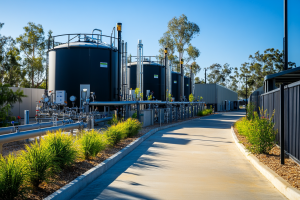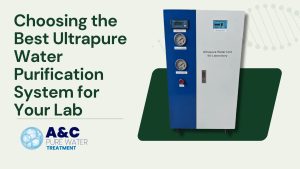Ion exchange resin is a type of solid, porous substance that is used in water treatment processes to remove or exchange certain ions from water. It is made up of small beads or granules that are typically composed of a polymer matrix, which contains functional groups that can attract and exchange ions. Here’s how ion exchange resin works in water treatment:
1. Ion Exchange Process: The resin contains charged sites (ionic groups) that can attract and hold ions of opposite charge from the surrounding solution. For example, a cation exchange resin has negatively charged sites, so it will attract and hold positively charged ions (cations), while an anion exchange resin has positively charged sites, so it will attract and hold negatively charged ions (anions).
2. Removal of Undesired Ions: When water-containing ions pass through a bed of ion exchange resin, the ions in the water are attracted to and exchanged with the ions on the resin. This process effectively removes specific ions from the water.
3. Regeneration: Over time, the ion exchange resin becomes saturated with the ions it has removed from the water. When this happens, the resin needs to be regenerated. This involves passing a concentrated solution of the ions that the resin initially held onto through the resin bed. The ions on the resin are then replaced with the ions from the regeneration solution. This rejuvenates the resin, allowing it to be used again.
There are two main types of ion exchange resins used in water treatment:
1. Cation Exchange Resins: These resins exchange positively charged ions (cations) in the water with positively charged ions on the resin. Common cations removed include calcium, magnesium, and sodium.
2. Anion Exchange Resins: These resins exchange negatively charged ions (anions) in the water with negatively charged ions on the resin. Common anions removed include nitrate, sulfate, and chloride. Ion exchange resin is widely used in various water treatment applications, including: –
Softening Water: Removing hardness ions like calcium and magnesium. –
Deionization: Removing most or all ions from water, creating demineralized or deionized water.
Selective Ion Removal: Targeting specific contaminants, like heavy metals or nitrates. –
Wastewater Treatment: Treating industrial or municipal wastewater to remove specific pollutants.
It’s important to note that while ion exchange is highly effective for certain types of ion removal, it may not be suitable for all types of water treatment scenarios. It’s essential to consider the specific ions present in the water and the intended outcome of the treatment process.
Contact No. 0415 725 920
Email:
ancpurewater@gmail.com
ancpurewater@outlook.com
Address: 2 Murndal Court, Berwick VIC, 3806







